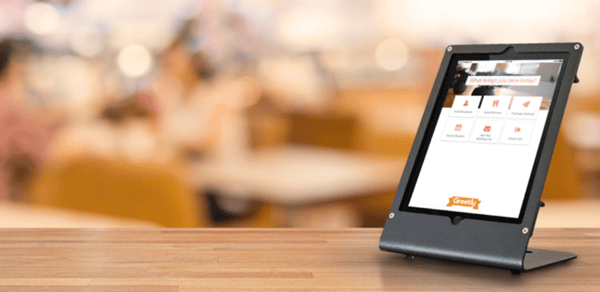If you manage a business, you recognize the constant pressure to increase productivity in the workplace. It is a never-ending battle to get the most out of your limited resources. While there are countless enemies of productivity, this article explores five tips to help you increase productivity for yourself and your team.
Reduce Face-to-Face Distractions
On average, distractions take up a quarter of your employees’ time. In addition to gobbling up precious time, distractions break employees’ concentration and doubles error rates. Research suggests one hour of distraction is worth $10,375 per employee per year.
40% of employees say coworkers stopping by to chat is a top distraction. Other physical distractions include employees chatting nearby, a loud noise like a door slamming, and office visitors walking through the workplace. These distractions are especially problematic for “near-the-door” employees and people who work in cubes.
Increase productivity in the workplace by:
- Minimizing the use of cubicles
- Creating places for ad hoc meetings away from where people are working
- Giving employees a visual indicator to suggest they are not available for drop by conversations
- Discouraging office gossip. Conversations that include names are more distracting than other hallways conversations.
- Providing a quiet space for employees to work away from their desk
- Allow employees to work from home some or all of the time
Reduce Technology Distractions
 In addition to physical distractions, technology disrupts productivity in the workplace too. Yes, some of these tools both create and destroy productivity. This problem is twofold. First, there are a number of communication vehicles including phone, email, instant messaging, text messaging, push notifications, and others. Second, the fear of our inboxes getting out of control, or missing an important message, have workers checking email an astonishing 30-40 times per hour.
In addition to physical distractions, technology disrupts productivity in the workplace too. Yes, some of these tools both create and destroy productivity. This problem is twofold. First, there are a number of communication vehicles including phone, email, instant messaging, text messaging, push notifications, and others. Second, the fear of our inboxes getting out of control, or missing an important message, have workers checking email an astonishing 30-40 times per hour.
Increase productivity in the workplace by:
- Setting one primary communication channel for your office so employees can focus their efforts there
- Follow the advice of productivity expert Laura Stack by encouraging employees to spend most of their time operating as if in airplane mode. Meaning, have them turn off visual and audio message notifications, or have your IT department turn them off by default. Rather, employees should schedule brief periods focused on efficient communications.
- Position permitting, have employees check email and voice mail just 2-4 times per day.
- Asking employees to only copy coworkers on emails when necessary.

Automate and Outsource
Many years ago the first person to the office turned on the lights and temperature controls. Today those are usually that is probably done by computers. Similarly, in the past payroll meant several people calculating wages, taxes and other deductibles. Today that function has probably been to a third-party vendor. If you look around your small office you will probably see several ways to improve productivity by outsourcing and automating.
Increase productivity in the workplace by:
- Using Greetly to welcome guests and notify employees
- Outsourcing repetitive, non-core tasks like copywriting, design work and more using elance (creative), odesk (technical) and countless other services.
- Implementing customer relationship management (CRM) programs. This will free up significant time for your marketing and sales teams.
- Making commonly used files easily available to all employees. File sharing programs like Dropbox and Google Docs making granting and editing access easy. They also track changes and minimize the number of file versions.
Encourage Breaks (And Even Naps!)
Nature had not intended mankind to work from 8 in the morning until midnight without the refreshment of blessed oblivion which, even if it only lasts 20 minutes, is sufficient to renew all the vital forces.
– Winston Churchill who coined the phrase “power nap”.
In Scaling Up Excellence: Getting to More Without Settling for Less, authors Robert I. Sutton and Huggy Rao site several research studies demonstrating that fatigue damages performance. “Making repeated judgments or decisions depletes individuals executive function and executive resources, rendering people to simplify, accept the status quo, think less deeply about choices and perform less well about on tasks that required more mental resources.” Breaks can even help employees avoid injury, according to the to American Academy of Orthopaedic Surgeons.
Sutton and Rao suggest giving employees a place to nap and encouraging them to take advantage of it. However, resting on the job is a serious, fireable offense in many offices.
As an alternative, employees should take regular physical and mental breaks. Recent research suggested this formula for maximum productivity: work 52 minutes then take a 17-minute break. Ideally, breaks should move employees away from their workstations, not merely checking their personal emails and Facebook feeds. Optimal breaks can include meals or snacks away from their desks, ideally while socializing with coworkers or friends, reading, a walk, or even just taking a moment to stretch your legs.
DIScourage Multi-Tasking
 It is very common for a job description to include “must be able to multi-task”. And in a technology-driven world we face a relentless stream of email, social media, and news alerts. It seems our attention is constantly being pulled in new directions, and we feel the need to make instant reactions every waking making.
It is very common for a job description to include “must be able to multi-task”. And in a technology-driven world we face a relentless stream of email, social media, and news alerts. It seems our attention is constantly being pulled in new directions, and we feel the need to make instant reactions every waking making.
However, the experts suggest we should learn to focus instead. A research MIT research study suggested, “This constant task-switching encourages bad brain habits… that makes us feel like we’re accomplishing a ton when we’re really not doing much at all”. The result is a reduction in both quantity and quality of work produced.
How can your employees fight back? Productivity expert Frances Booth gives specific tips for reducing mental clutter in order to grow your productivity. One example is taking action on emails right away, as opposed to skimming them and leaving them in your inbox for later. The action might be an immediate response. Or, if more thought is required, she suggests turning it into a specific to-do so you can clear it from your mind.
Summary
Increasing productivity is hard. Yet it is vital to helping you and your organization achieve its goals. Productivity and job satisfaction are also tied in a virtuous circle. Many of our tips may seem counter-intuitive. However, they are all based on scientific research and have been proven in the workplace.
Please share your tips and experiences implementing workplace productivity solutions.